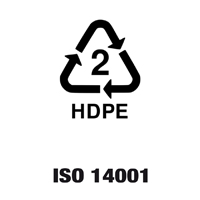 Recently, I was reading one of those business-to-business online discussions and someone asked for recommendations on tree-free paper. One of the first suggestions was Polyart, a synthetic paper made from recycled plastic. Sounds good, right? Paper not made from trees. What could be greener than that?
Recently, I was reading one of those business-to-business online discussions and someone asked for recommendations on tree-free paper. One of the first suggestions was Polyart, a synthetic paper made from recycled plastic. Sounds good, right? Paper not made from trees. What could be greener than that?
I went to the company’s site and read through its environmental statement. The more I read, however, the more I found myself saying, “Yes, but . . . Yes, but . . .” It’s part of this whole critical thinking about environmental claims kick I’ve been on lately.
First, we must ask the question, do we really need an alternative to tree fiber anyway? As long as the fiber comes from sustainably managed forests, making paper from tree fiber is a good thing.
Trees are a renewable resource, and currently, U. S. paper mills plant more trees than they harvest. Not only this, but sustainably managed, commercial forestry protects natural resources and maintains the health of the forest. (See my related posts on sustainable forestry.) Not only this, but nearly two-thirds of the energy used by U. S. paper mills is generated on-site from renewable energy, including hydropower and biomass.
Tree-fiber-based paper is good for the environment. Even Dr. Patrick Moore, co-founder of Greenpeace and currently chair/chief scientist of Greenspirit Strategies, Inc., has widely been quoted as saying, “Forestry is the most sustainable of all the primary industries that provide us with energy and materials. To address climate change, we must use more wood, not less. Using wood sends signals to the marketplace to grow more trees.”
Now to plastic paper itself. To use Polyart as the example, this paper is made from recycled plastic and, according to the company, is 100% recyclable in category 2 HDPE.
Sounds great, but recycled products can actually have a higher carbon footprint than virgin products. Does the company use renewable energy? Or is it drawing off the grid?
Also, Polyart does have a lean, highly efficient and low-waste production process (ISO 14001), but what happens after the paper is manufactured? Just because a product can be recycled doesn’t mean it is being recycled. How many people receiving a product printed on synethic paper will know to put it into the 2 HDPE stream? Probably close to none. It’s likely remanufactured — which generates a higher carbon footprint — and then unless it is recovered (highly unlikely), it ends up in the landfill through the consumer stream anyway.
So is plastic paper the greener alternative to tree-fiber-based paper? Probably not.
Don’t get me wrong. Plastic paper is great. It has a lot of important uses for things like maps, menus, and other products for which the slick, nonporous substrate comes in handy. My issue is when such products are positioned as the more environmentally sensitive alternative to paper-based products. I just ain’t sure that’s true.










Why not look at other alternatives available in the market, for example a bio-degradable (landfill) synthetic material that is porous instead? So no need to recycle and you can have the assurance that it will break down at the landfill through anaerobic activity. One example is PPG’s material…Teslin (I think its named after a Canadian town).